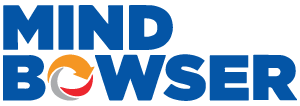Here are the 13 steps of revenue cycle management:
A smooth revenue cycle management (RCM) process isn’t just nice to have—it’s a must for keeping your healthcare organization financially stable and running efficiently. From claims processing to billing and payment collection, RCM ensures you get paid on time while minimizing costly errors. Without a well-structured system in place, you’re looking at claim denials, cash flow headaches, and extra administrative work that no one has time for.
Understanding the 13 steps of revenue cycle management is important for optimizing revenue collection and reducing financial inefficiencies. Healthcare organizations that streamline their RCM processes benefit from faster reimbursements, lower claim rejection rates, and improved revenue integrity.
The U.S. revenue cycle management market was valued at USD 172.24 billion in 2024 and is projected to grow at a CAGR of 10.1% from 2025 to 2030, highlighting the increasing demand for RCM automation services and AI-driven financial workflows.
This guide breaks down the RCM cycle steps, showing how each stage impacts cash flow, compliance, and overall financial performance.
A well-structured RCM process ensures timely reimbursements, fewer claim denials, and better cash flow. These 13 steps of revenue cycle management streamline billing, claims processing, and payment collection, optimizing financial performance. Understanding these RCM cycle steps helps providers improve efficiency and compliance.
Pre-registration is the first step in the revenue cycle process, where healthcare providers collect basic patient details before their visit. This includes name, contact information, insurance coverage, and medical history. Gathering this information early allows clinicians to confirm insurance eligibility, predict expenses, and avoid billing difficulties.
Accurate pre-registration helps avoid claim rejections, billing errors, and unnecessary delays, making the entire RCM process smoother. It also ensures patients know their financial responsibilities upfront, reducing confusion and payment issues later.
Registration happens when a patient arrives for their visit. It involves confirming personal details, insurance information, and signing consent forms. This step is crucial for accurate record-keeping and ensures that billing and claims processing run smoothly.
Mistakes in registration can cause claim denials, billing delays, and miscommunication between providers and payors. Verifying all details at this stage helps prevent errors, reduce administrative hassles, and ensure faster reimbursements in the RCM process.
Related Read: A Guide to Healthcare Revenue Cycle Management
Insurance verification ensures a patient’s medical services are covered by their insurance provider. This step confirms policy status, co-pays, deductibles, and pre-authorization requirements to avoid billing issues later.
Claims may be denied, leading to unexpected patient costs and financial losses for providers without proper verification. A well-managed RCM cycle step helps prevent claim rejections, reduce payment delays, and ensure smooth reimbursement processing.
Charge capture ensures that all medical services and procedures provided during a patient’s visit are properly documented for billing. This step is essential for accurate reimbursement and helps providers receive full payment for services rendered.
Incomplete or incorrect charge capture can result in revenue loss, claim underpayments, and billing discrepancies, affecting the RCM process. Proper documentation reduces errors, improves financial accuracy, and ensures providers get paid correctly.
Medical coding solutions translate diagnoses, procedures, and treatments into standardized ICD-10, CPT, and HCPCS codes for billing. This step ensures that claims comply with payer guidelines, reducing the chances of denials and payment delays.
Errors in medical coding can lead to delayed reimbursements, compliance issues, and revenue loss in the RCM steps. Accurate coding improves claim acceptance rates, speeds up payment processing, and ensures financial stability for healthcare providers.
Submitting claims to insurance providers is important in the RCM process, ensuring that healthcare services are billed and reimbursed correctly. Claims must be filed accurately and within deadlines to prevent denials and payment delays.
Claim processing automation in claim submission speeds up processing, reduces administrative workload, and improves reimbursement timelines. Proper claim management ensures fewer errors, faster approvals, and optimized cash flow for healthcare providers.
The adjudication process is where insurance companies review claims to determine coverage eligibility, reimbursement amounts, or reasons for denial. This step ensures that only valid and properly documented claims are approved for payment.
To avoid delays and rejections in the RCM cycle steps, providers must ensure claims meet all documentation and coding requirements. Proper adjudication management reduces denials, speeds up payments, and ensures accurate reimbursements for healthcare services.
Payment posting records payments from insurers and patients into the financial system, ensuring accurate revenue tracking. This step helps reconcile expected versus received payments, providing clear financial transparency for healthcare providers.
Errors in payment posting can cause billing disputes, reporting inaccuracies, and financial imbalances. Proper reconciliation and automated posting reduce discrepancies, improve cash flow management, and ensure smooth revenue cycle operations.
Denial management involves analyzing and correcting claim denials to ensure timely reimbursements. Providers must identify trends, fix errors, and resubmit claims promptly to minimize revenue loss.
A proactive RCM step includes appeal strategies, automated tracking, and payer negotiations to reduce future denials. Effective denial management improves cash flow, accelerates payments, and strengthens financial stability for healthcare providers.
A/R follow-up ensures that unpaid claims and patient balances are resolved immediately, preventing revenue loss. Regular follow-ups with payers and patients help reduce payment delays and improve cash flow stability.
Inefficient A/R management leads to rising debt, weakening financial stability, and disrupting the RCM process. Proactive A/R tracking and automation ensure faster collections, fewer write-offs, and a healthier revenue cycle.
Patient billing involves generating accurate statements for any remaining balances after insurance payments. Transparent billing practices and clear communication help patients understand their financial responsibilities.
A patient-friendly billing approach encourages timely payments, reducing disputes and collection delays. Effective billing strategies, including digital payment options and automated reminders, enhance revenue collection and patient satisfaction.
Payment collection involves managing patient payments through online portals, payment plans, and automated reminders. Offering multiple payments is easier for patients to settle balances on time.
A structured collection process improves revenue flow, reduces accounts receivable delays, and ensures financial stability in the RCM cycle. Automating billing reminders and payment tracking enhances collection rates and minimizes outstanding balances.
Generating revenue cycle reports helps assess the efficiency of the RCM process by tracking claim approvals, denial patterns, and revenue trends. These insights allow providers to identify inefficiencies and improve financial workflows.
AI-driven analytics in the RCM cycle procedures enhance decision-making and revenue forecasting, ensuring optimized cash flow and financial stability. Real-time data tracking helps providers streamline billing, reduce denials, and maximize reimbursements.
Related read: Comprehensive Guide to the RCM Process in Healthcare
| KPI | Target range | If below the target, do this next |
| Days in A/R | 30–40 days | Rebalance follow-up queues, escalate >$5k claims, audit top 5 aging payers |
| First-pass resolution rate | ≥ 85–90% | Strengthen edits for top denial CARCs, fix documentation gaps, add pre-auth checks |
| Denial rate | < 5–8% | Classify denials, address top 3 root causes, train frontline teams |
| Net collection rate | > 95% | Validate payer underpayments vs. contracts, review write-off policies |
| Clean claim rate | > 90–95% | Tighten scrubbing rules, ensure required attachments, fix recurring format errors |
Revenue cycle management comes with challenges that impact billing efficiency and financial stability. High denial rates delay reimbursements as manual claim reviews often miss documentation errors and eligibility issues, leading to frequent rejections. Slow patient payments strain cash flow due to a lack of automation in billing, making it difficult for patients to track and settle bills on time.
Manual coding errors in ICD and CPT codes increase claim denials, administrative workload, and revenue losses. Addressing these RCM cycle steps with AI-driven automation is key to improving billing accuracy, accelerating payments, and optimizing financial performance.
Mindbowser automates revenue cycle management with AI-powered solutions, eliminating billing inefficiencies and reducing claim denials. Our automated coding validation, digital self-pay portals, and predictive analytics ensure error-free billing and faster approvals. With HIPAA-compliant security and seamless EHR integration, healthcare providers can streamline financial workflows, improve cash flow, and reduce administrative burdens, making revenue cycle automation more efficient and scalable.
We Implemented EHR Integration and automation for childbirth management platform achieving $23,500 average cost savings!
A sneak into how we streamline data processes, enhance efficiency, and achieve substantial cost savings for the client.

Following these 13 steps of revenue cycle management is the key to higher collections and lower denials, ensuring a profitable and efficient RCM process. Our AI-driven revenue cycle automation streamlines billing, claim approvals, and patient payments, reducing manual errors and administrative burdens. With predictive analytics, automated coding validation, and seamless EHR integration, healthcare providers can optimize financial workflows, improve cash flow, and enhance revenue cycle performance.
They are pre-registration, registration, insurance verification, charge capture, medical coding, claim submission, adjudication, payment posting, denial management, A/R follow-up, patient billing, payment collection, and reporting and analytics.
Revenue cycle management (RCM) covers patient registration, insurance verification, claims processing, payment collection, and financial reporting. The goal is to ensure efficient billing and faster reimbursements while minimizing denials and revenue losses.
Revenue life cycle management refers to the entire financial process of patient care, from appointment scheduling to final payment collection. It streamlines billing workflows, improves cash flow, and enhances operational efficiency for healthcare providers.
Aim for a denial rate below 5–8%. If it trends higher, review the top denial reasons, update your claim edits, and shore up documentation and prior authorization.
The 4 P’s of RCM are Patients, Providers, Payers, and Processes. These elements work together to optimize billing accuracy, accelerate payments, and reduce administrative burdens in healthcare financial operations.
Tighten claim scrubbing, align coding with payer policies, ensure prior auth, and attach required documentation. Track edit failures weekly.
The basic revenue cycle includes patient intake, claims submission, payment processing, and revenue reconciliation. Efficient RCM automation ensures faster reimbursements, fewer denials, and improved financial performance for healthcare organizations.
Days in A/R, first-pass resolution, denial rate, net collection rate, and clean claim rate. Review weekly and monthly with owner assignments.
Many providers outsource pre-auth, coding audits, eligibility, or A/R follow-up to reduce backlogs and improve speed to cash, while keeping oversight in-house.

We worked with Mindbowser on a design sprint, and their team did an awesome job. They really helped us shape the look and feel of our web app and gave us a clean, thoughtful design that our build team could...


The team at Mindbowser was highly professional, patient, and collaborative throughout our engagement. They struck the right balance between offering guidance and taking direction, which made the development process smooth. Although our project wasn’t related to healthcare, we clearly benefited...

Founder, Texas Ranch Security

Mindbowser played a crucial role in helping us bring everything together into a unified, cohesive product. Their commitment to industry-standard coding practices made an enormous difference, allowing developers to seamlessly transition in and out of the project without any confusion....

CEO, MarketsAI

I'm thrilled to be partnering with Mindbowser on our journey with TravelRite. The collaboration has been exceptional, and I’m truly grateful for the dedication and expertise the team has brought to the development process. Their commitment to our mission is...

Founder & CEO, TravelRite

The Mindbowser team's professionalism consistently impressed me. Their commitment to quality shone through in every aspect of the project. They truly went the extra mile, ensuring they understood our needs perfectly and were always willing to invest the time to...

CTO, New Day Therapeutics

I collaborated with Mindbowser for several years on a complex SaaS platform project. They took over a partially completed project and successfully transformed it into a fully functional and robust platform. Throughout the entire process, the quality of their work...

President, E.B. Carlson

Mindbowser and team are professional, talented and very responsive. They got us through a challenging situation with our IOT product successfully. They will be our go to dev team going forward.

Founder, Cascada

Amazing team to work with. Very responsive and very skilled in both front and backend engineering. Looking forward to our next project together.

Co-Founder, Emerge

The team is great to work with. Very professional, on task, and efficient.

Founder, PeriopMD

I can not express enough how pleased we are with the whole team. From the first call and meeting, they took our vision and ran with it. Communication was easy and everyone was flexible to our schedule. I’m excited to...

Founder, Seeke

We had very close go live timeline and Mindbowser team got us live a month before.

CEO, BuyNow WorldWide

Mindbowser brought in a team of skilled developers who were easy to work with and deeply committed to the project. If you're looking for reliable, high-quality development support, I’d absolutely recommend them.

Founder, Teach Reach

Mindbowser built both iOS and Android apps for Mindworks, that have stood the test of time. 5 years later they still function quite beautifully. Their team always met their objectives and I'm very happy with the end result. Thank you!

Founder, Mindworks

Mindbowser has delivered a much better quality product than our previous tech vendors. Our product is stable and passed Well Architected Framework Review from AWS.

CEO, PurpleAnt

I am happy to share that we got USD 10k in cloud credits courtesy of our friends at Mindbowser. Thank you Pravin and Ayush, this means a lot to us.

CTO, Shortlist

Mindbowser is one of the reasons that our app is successful. These guys have been a great team.

Founder & CEO, MangoMirror

Kudos for all your hard work and diligence on the Telehealth platform project. You made it possible.

CEO, ThriveHealth

Mindbowser helped us build an awesome iOS app to bring balance to people’s lives.

CEO, SMILINGMIND

They were a very responsive team! Extremely easy to communicate and work with!

Founder & CEO, TotTech

We’ve had very little-to-no hiccups at all—it’s been a really pleasurable experience.

Co-Founder, TEAM8s

Mindbowser was very helpful with explaining the development process and started quickly on the project.

Executive Director of Product Development, Innovation Lab

The greatest benefit we got from Mindbowser is the expertise. Their team has developed apps in all different industries with all types of social proofs.

Co-Founder, Vesica

Mindbowser is professional, efficient and thorough.

Consultant, XPRIZE

Very committed, they create beautiful apps and are very benevolent. They have brilliant Ideas.

Founder, S.T.A.R.S of Wellness

Mindbowser was great; they listened to us a lot and helped us hone in on the actual idea of the app. They had put together fantastic wireframes for us.

Co-Founder, Flat Earth

Mindbowser was incredibly responsive and understood exactly what I needed. They matched me with the perfect team member who not only grasped my vision but executed it flawlessly. The entire experience felt collaborative, efficient, and truly aligned with my goals.

Founder, Child Life On Call

The team from Mindbowser stayed on task, asked the right questions, and completed the required tasks in a timely fashion! Strong work team!

CEO, SDOH2Health LLC

Mindbowser was easy to work with and hit the ground running, immediately feeling like part of our team.

CEO, Stealth Startup

Mindbowser was an excellent partner in developing my fitness app. They were patient, attentive, & understood my business needs. The end product exceeded my expectations. Thrilled to share it globally.

Owner, Phalanx

Mindbowser's expertise in tech, process & mobile development made them our choice for our app. The team was dedicated to the process & delivered high-quality features on time. They also gave valuable industry advice. Highly recommend them for app development...

Co-Founder, Fox&Fork
